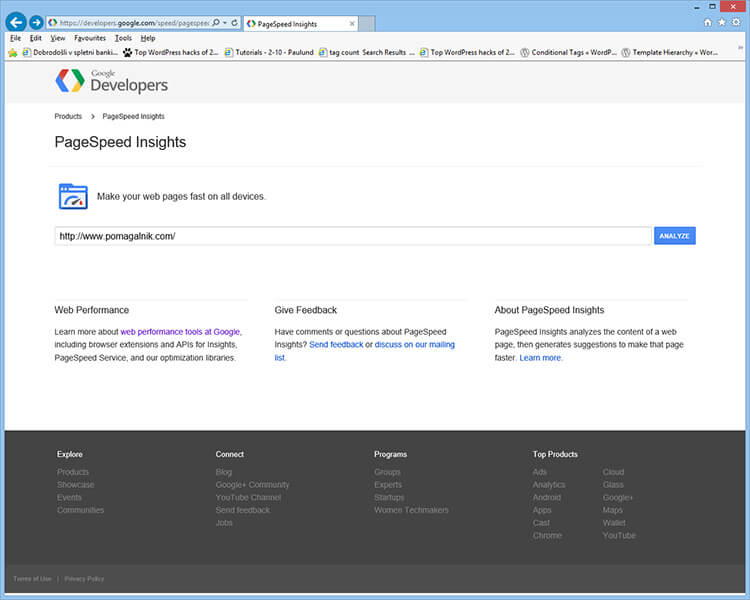
These include configuring the viewport, adjusting the size of your content to fit the viewport and using legible font sizes. You're probably less familiar with its list of usability rules. These include things like enabling compression, improving server response time, leveraging browser caching, minifying resources, optimizing images, removing render-blocking JavaScript and more. You're probably more familiar with its list of speed rules. These rules are separated into two categories: Google uses its own set of rules to analyze your site. After it's done analyzing the mobile and desktop versions of your site, it'll give you a different score (between 0 and 100) for each. In Google's own words, it works by “fetching the URL twice, once with a mobile user-agent, and once with a desktop user-agent”. PageSpeed Insights is a development tool Google offers to let you analyze the performance of a website.

What is PageSpeed Insights? Image Source: 3151940 – / License: Public Domain CC0 How important is a good performance score?.The question we're asking in this post is this: How important is a good performance score? More specifically, is a perfect PageSpeed Insights score a good representation of speed and performance? However, the usefulness of this tool is not the question we're asking in this post. It can help you pinpoint key technical issues occurring on your site that may have a negative impact on its speed and performance. Image Source: Sadia – / License: CC0 Public Domain Some of you, however, are site owners with little to no technical inclination, so you rely on tools like PageSpeed Insights to ensure you're doing things right.

What's your PageSpeed Insights score? Is it far from perfect? Is it three points away from 100? Causing you to rack your brain and surf the net incessantly in search of ways to get that sweet, sweet 100/100 score? Some of you in the MH Themes community are developers, so we know you take this score into consideration, even if a little.


 0 kommentar(er)
0 kommentar(er)
